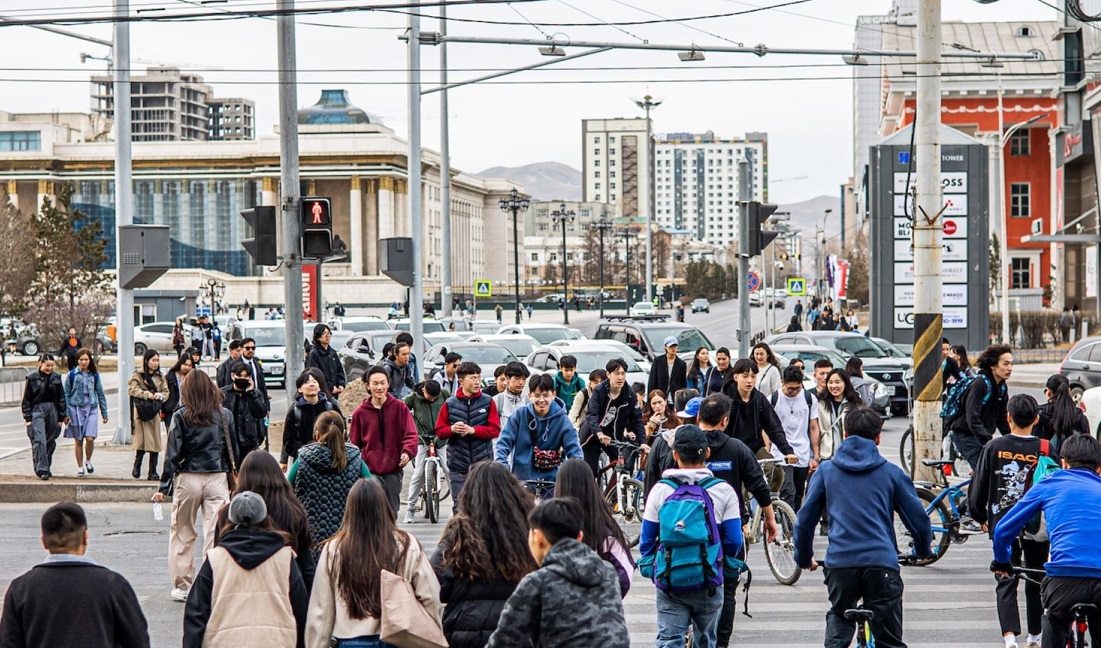Ulan Bator, the capital of all Mongols
With the mobilisation for the war in Ukraine, several thousand Buriati - ethnic Mongols living within Russia's borders - moved to Ulan Bator. But in recent decades, the capital has changed a lot, turning over a new leaf from its Soviet heritage. And despite their historical and cultural affinity, the Rlokanty are finding it hard to settle in a world very different from the one they were used to living in.
Ulaanbaatar (AsiaNews) - Since the beginning of the mobilization for the war in Ukraine, over 6 thousand Russian citizens have moved to Mongolia, mostly ethnic Mongolians from Buryatia, Zabaykal and the Irkutsk region, settling mostly in the capital Ulaanbaatar.
Although the Buryats and Mongols are close relatives, the Relokanty from Russia struggle to acclimate to a world very different from the one they were used to living in. An anonymous journalist and photographer from the Baikal People agency reported various impressions of their conditions in Mongolia's main metropolis.
Until about twenty years ago, Ulaanbaatar did not differ much from the typical capitals of the Soviet Asian republics, as Mongolia had remained under the strong influence of the USSR for 70 years, even though it was not formally part of it.
In recent times the city has changed profoundly, and its inhabitants have freed themselves from the many symbols of the communist period, such as the mausoleum and monuments to Lenin in the central squares, and contemporary buildings have been built in place of the previous barracks, still existing in the most Russian cities.
The name of the city, Ulan-Bator or Ulaanbaatar according to the various spellings, appeared 100 years ago, in place of the ancient Urga, the Russified variant of the Mongolian Өrgөө which means "palace, seat of an important man".
After the revolution, in 1924 it was decided to call it Bator-Khoto, "Hero City", meaning the memory of Genghis Khan, but the Comintern, the international structure of the communists, insisted on Ulan-Bator.
The capital, home to over a million people, is considered the heir of the ancient Karakorum, seat of the Great Khan "of the oceans" who presided over the entire Mongol Empire, even if a Kharkhorin (Karakorum) currently exists to the west of the metropolis.
At the beginning of the 2000s, de-colonization from the Russian-Soviet past was activated, with the removal of monuments and the renaming of city streets and squares: the Nayramdal district, the Soviet title of "friendship between peoples" became Bayanzurkh , which means “wealth and prosperity”.
The Russian language is actually still very widespread among the Mongolians, and the Russians here cannot get lost along the way, they always find someone who understands them and helps them. Young people, however, have no interest in studying Russian, having South Korea and the United States as their main references.
In Russian history textbooks, the Golden Horde of the Mongols is still represented as a collection of wild and cruel cutthroats, as they were described by the nineteenth-century Russian historians Karamzin and Klyuchevsky, although the level of development of the Mongol Empire did not stand out negatively compared to the European states of the late Middle Ages. It was an empire based on religious tolerance, and among the khans there were also Christians.
The central square of Ulaanbaatar was renamed in 2013 as Genghis Khan Square; although the descendants of the revolutionaries tried to maintain the Soviet title of Sukhe-Bator, the leader who occupied the central mausoleum together with the other politician Čoybalsan, are now buried at the cemetery, and the mausoleum itself has been removed.
The parade entrance of the government palace, recently visited also by Pope Francis, is dominated by the imposing statue of Genghis Khan who sits on the imperial throne, with his descendants and commanders next to him, those who invaded Asia, Russia and the Middle East. 95% of the population are Mongolians, and the rest are Asian Russians and Kazakhs, as well as a number of Koreans. Many Chinese live in Inner Mongolia, and outside the country there are about nine million Mongolians, three times more than the same inhabitants inside.
Modern Mongolia is looking for its own path to democracy and overcoming deep-rooted corruption systems, focusing above all on the capital, while in the rest of the country there are still many Yurt villages, the nomadic tents of the ancient people. Today the "new nomads" are the Russian relokanty, who will also have to learn to become Mongols of a civilization that is rebuilding itself, seeking stability and peace.
07/02/2019 17:28
11/08/2017 20:05







.png)










